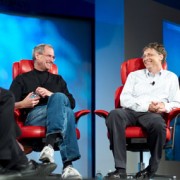How Eastline Marketing Accelerated the Largest Startup Conference in the Region
Last year, Banque Du Liban unveiled Circular 331, a new initiative that allows banks to use a $400,000,000 fund to act as investors for startups in Lebanon. In order to educate these young companies on how to make it big and learn more about the circular, Banque du Liban (BDL) organized the largest startup conference in the region: BDL Accelerate. But how to raise awareness, attract 2,000 quality attendees (entrepreneurs, investors, and more) and over 80 partners on such short notice?
This was our cue. We came up with a simple but extremely efficient strategy that involved four platforms: Facebook, Twitter, Instagram, and a blog. We were able to generate interest and excitement by providing high-value content across the board. We posted daily on all platforms and built up to the event by using in-depth profiles of our speakers, Q&As, and informative pots about the partners. We promoted Tweets and launched 5 Google and Facebook advertising campaigns, spanning 32 countries, generating 14 Million impressions and 144,000 clicks. We were using #Accelerate2014 as the dedicated hashtag for the campaign on Facebook, Twitter, and Instagram.
Facebook:
During the campaign, we posted on a daily basis. We talked about software and social media, showcased our blog posts, advertised the event… But we didn’t stop there! During the two days of the event, we posted 622 pictures, gathering over 9,320 likes and reaching 1,002,255 users. In the end, the page exceeded 21,000 likes from over 30 countries, had close to 400 shares, and 342 comments.
Twitter:
Twitter was a challenge because creating a community takes quite some time. However, by tweeting 6-10 times a day until the event and then providing an extensive live coverage of the event, we gathered over 9,300 followers. We tweeted 656 times and gathered a total of 1.7 Million impressions, 835 favorites, and 905 retweets. With 1215 mentions, #Accelerate2014, our dedicated hashtag, was at the top of the “Trending” list for Lebanon during the two days of the event.
Instagram:
Without any kind of media and very little time, Instagram was a real challenge for us. We warmed up before the event by posting about our speakers, redirecting users to the blog for more info. When came live coverage time, the engagement went through the roof. We ended up posting 33 videos and 143 images in total, gathering 166 followers.
Website/Blog:
With over 70,000 visits, the average time on site reached an impressive 2.52 seconds and the registration count exceeded 1,800. The blog itself accounted for 1,000 visits on 48 posts and tackled topics such as the speakers, Q&As, the partners, live coverage, and more. It helped us bring value and insight to our audience before the event, which generated a lot of interest.
It was a pleasure and a great opportunity for Eastline Marketing to work on this project. We are proud to participate in the development of the regional startup ecosystem. The results have exceeded the client’s wildest expectations and we are looking forward to next year’s edition!






 Over the last decade, we’ve seen advertising agencies rapidly shift towards digital communication, yet they haven’t fully embraced the power of interactivity. This is why Eastline Marketing, a leading digital agency, has come up with a truly innovative solution: Social Ads.
Over the last decade, we’ve seen advertising agencies rapidly shift towards digital communication, yet they haven’t fully embraced the power of interactivity. This is why Eastline Marketing, a leading digital agency, has come up with a truly innovative solution: Social Ads. Marc Dfouni, CEO and managing partner at digital agency Eastline Marketing, gives a very concrete example of that sad, albeit usual, state of play: his company has lost four employees to Dubai in the past year. Dfouni anticipates a couple of more losses from now until the end of the year. “This problem is getting worse every year. The retention of these people is not an internal or a motivational problem, but mainly a political one,” he says….
Marc Dfouni, CEO and managing partner at digital agency Eastline Marketing, gives a very concrete example of that sad, albeit usual, state of play: his company has lost four employees to Dubai in the past year. Dfouni anticipates a couple of more losses from now until the end of the year. “This problem is getting worse every year. The retention of these people is not an internal or a motivational problem, but mainly a political one,” he says…. Like most of us who were swept by the social media marketing wave, Jennifer Kanaan, who now works as the Social Media Manager at Eastline Marketing…
Like most of us who were swept by the social media marketing wave, Jennifer Kanaan, who now works as the Social Media Manager at Eastline Marketing…
 During the past decade, CEOs of tech companies have become just as popular as music and movie stars. How come? How does it show? What are the consequences?
During the past decade, CEOs of tech companies have become just as popular as music and movie stars. How come? How does it show? What are the consequences?
 As online marketing grows, new ways of advertising emerge. Lately, this “content marketing” has been the talk of the town. But what is it exactly? Why is it making so much noise? How can you leverage it for your business?
As online marketing grows, new ways of advertising emerge. Lately, this “content marketing” has been the talk of the town. But what is it exactly? Why is it making so much noise? How can you leverage it for your business?
 Three years after being selected as high impact entrepreneurs by
Three years after being selected as high impact entrepreneurs by 
 As
As  Social media is becoming integral to marketing plans. New strategies are being adopted to optimize its impact for companies or brands. According to Marc Dfouni, CEO of Eastline Marketing, an online marketing agency, social media is no longer the question.
Social media is becoming integral to marketing plans. New strategies are being adopted to optimize its impact for companies or brands. According to Marc Dfouni, CEO of Eastline Marketing, an online marketing agency, social media is no longer the question.